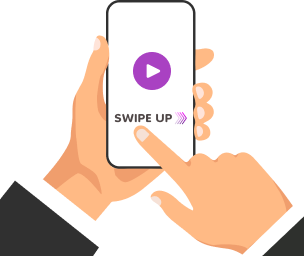-
01
Client
a network that manages advertising for entertainment content services.
-
02
Business tasks
Increase the number of users in Asia
Increase the number of users who also use TikTok
Create an additional channel for passive income
Reduce costs for creating content for the application
-
03
Solution
Launch an application similar to TikTok, adapted for the Asian market.
-
04
Results
The newly-launched application is in demand
- 94,000 App downloads in 4 months
- 99% of devices Operate without shutdowns
- 6 months Application development time
100k users online every day
The customer is an advertising company in Canada, and one of its projects is a service with entertainment content. A large part of the content is published in video format, and it is very popular: videos are viewed by 100 thousand users every day.
The customer receives income from ad impressions, and uses videos, banners, pop-ups, and other formats. Since the beginning of 2021, the service has had more than 9 billion ad impressions per month.
The customer’s income directly depends on the number of ad views, and accordingly on the number of users.
Problem: the service was losing users due to an inconvenient video format
In order to increase the number of users, the customer wanted to enter the Asian market.
In Asia, users are accustomed to TikTok: swipe ww2once to switch the video. The customer didn’t have an application with such mechanics. The video was shown in full-screen format, like on YouTube. Because of this, Asian users might not be as interested in the application.


Problem: It’s not profitable to produce videos for a new market
The company already had some content that would be suitable, but it was not enough to enter a new market. The obvious solution was to reassemble the content, but that would be a substantial additional cost. At the same time, there was no guarantee that the application would become popular and whether it could recoup its investment costs.
Solution: launch an application with TikTok mechanics and content from external sites.
The customer analyzed the ready-made solutions and decided that the most profitable thing to do was to create their own application. The company contacted OrbitSoft. We discussed the client’s needs and started working on the project.
We decided to use TikTok mechanics to attract new users, and add the ability to download videos from an external platform to the application. This reduces costs and expands the range: instead of recording your own content, it’s enough to agree on copyright and show users ready-made content.
Stages of work on the application
-
Discussion of app functionality
- Development tasks
- What problems can appear
- What customer must provide
- Work plan and deadlines
-
Design and development
- Application
- Connect services
- Discussion of intermediate versions
- App revision
-
Testing
- Checking the application on different devices
- Bug fixes
-
Testing
- Automated tests
- Load tests
-
LaunchThe application is downloaded by real users
-
Enhancements
- Additional tests
- Improvement of functions
Stage 1. Discussion regarding the application
Before beginning development, we once again discussed the customer’s wishes and signed the terms of reference. Here’s what we were targeting:
- Application for Android
- Two versions of the application: one with content for Asia, the other for the rest of the world
- Design and mechanics of video viewing like in TikTok
- Videos are loaded from an external platform
- Three types of ads in the application: banners, pop-ups, and videos
- Built-in anti-blocking
- Built-in analytics of downloads and video views
We estimated six months for work on the development and launch of the application.
Stage 2. Application architecture design and development
We designed a monolithic application with access to the content base and connected ready-made services to it. First, the customer saw the intermediate version. We wanted to make sure that we took everything important into account, and that there would be no need to redo half of the work and slow everything down once the app launched.
Stage 3. App tests
Before giving users access, we tested the application. In addition to technical testing, we tested everything the way a user would normally do it: we downloaded the application and watched how it works, looking for any issues at this stage and from this perspective.
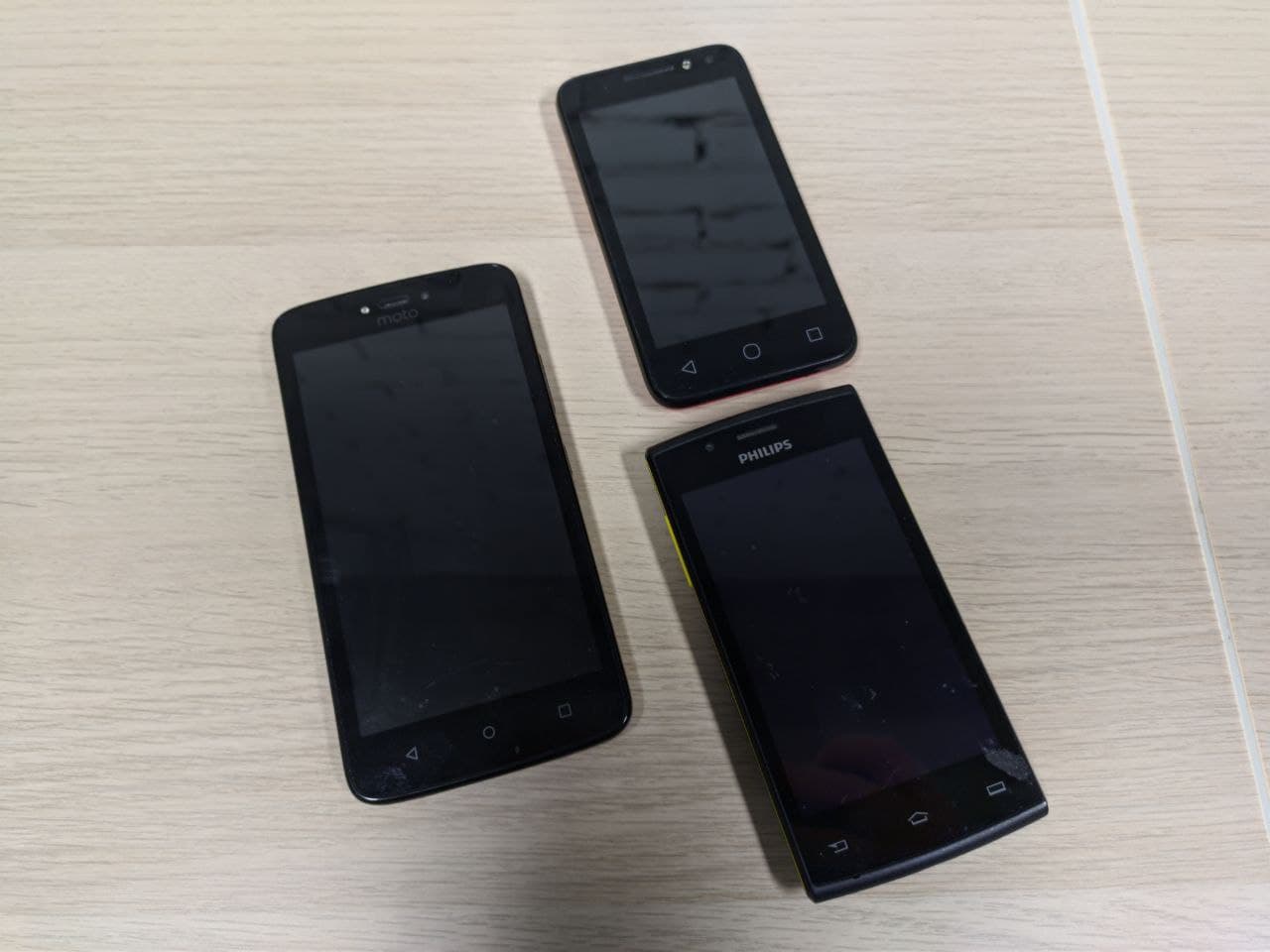
Stage 4. Launching the application
After testing, we gave access to users: they downloaded the application, and we observed to make sure that everything worked without errors.
A week later, we realized that there were no errors, and began to improve the application. For example, we added new features like the blacklist: users could delete a type of video if they didn’t like it.
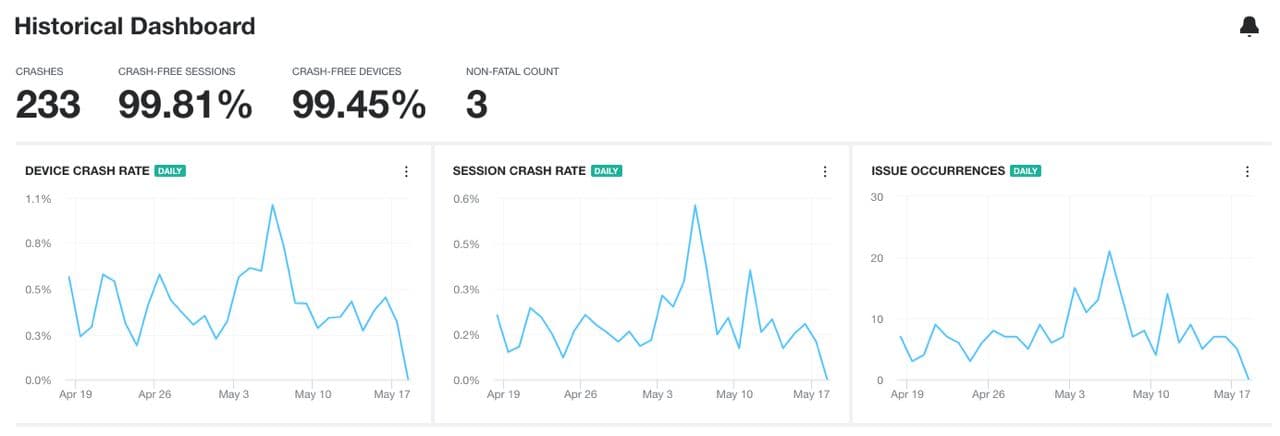
Application architecture: basic blocks and services
We developed a monolithic application: it has a simple architecture, so it doesn’t require a lot of resources. Just one specialist was responsible for the development. All of this helped the customer reduce expenditures.
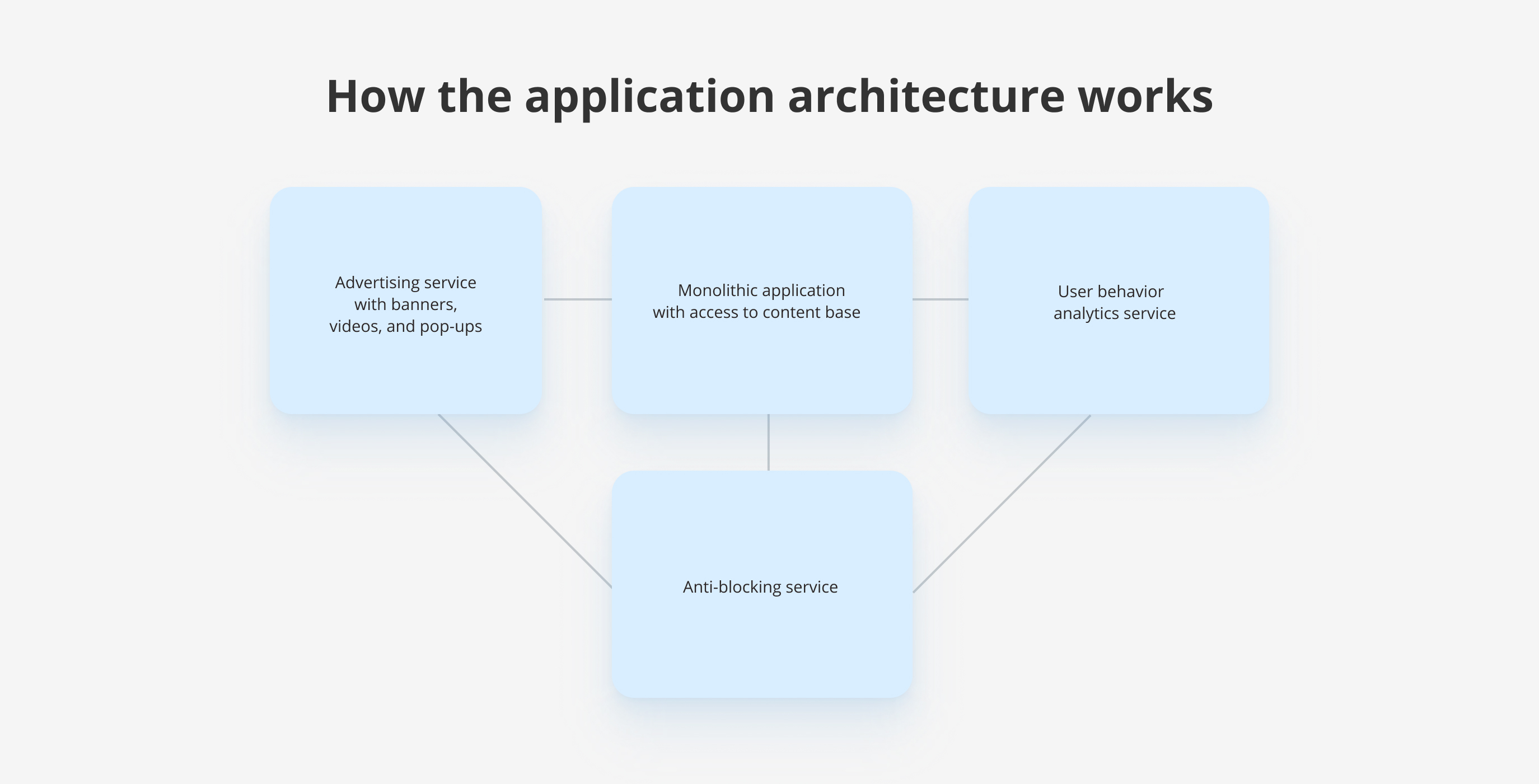
Advertising service. The customer earns on advertising by selling space in the application to advertisers. To make the application more attractive, we connected an advertising service. Now our customer offers advertisers different formats, such as banners or pop-up videos that pop up in full screen.
Analytics service. To increase the conversion from viewing content, we propose to study the algorithms of user behavior and their interaction with the content. To automate this process, we connected an analytics service to the application. It automatically tracks all important reactions. For example, which videos are watched to the end, swiped, or added to favorites.
Service against blocking. Some countries block access to resources. Restrictions may also apply to entertainment videos. To prevent such bans from affecting users, we built in a blocking bypass algorithm.
Results: we launched the application on schedule, and it’s popular! The application was launched in January 2020, with six months passing from first negotiations to release. During this time, we released two versions: one for the Asian market and one for the rest of the world. After a year of work on the application, the customer stopped supporting the worldwide version and focused only on the Asian market.
The application is popular: in the first four months it was downloaded 94k times. And according to statistics from 2021, 3 thousand people use the application every day.
OrbitSoft continues to monitor the application and fix bugs if something goes wrong.
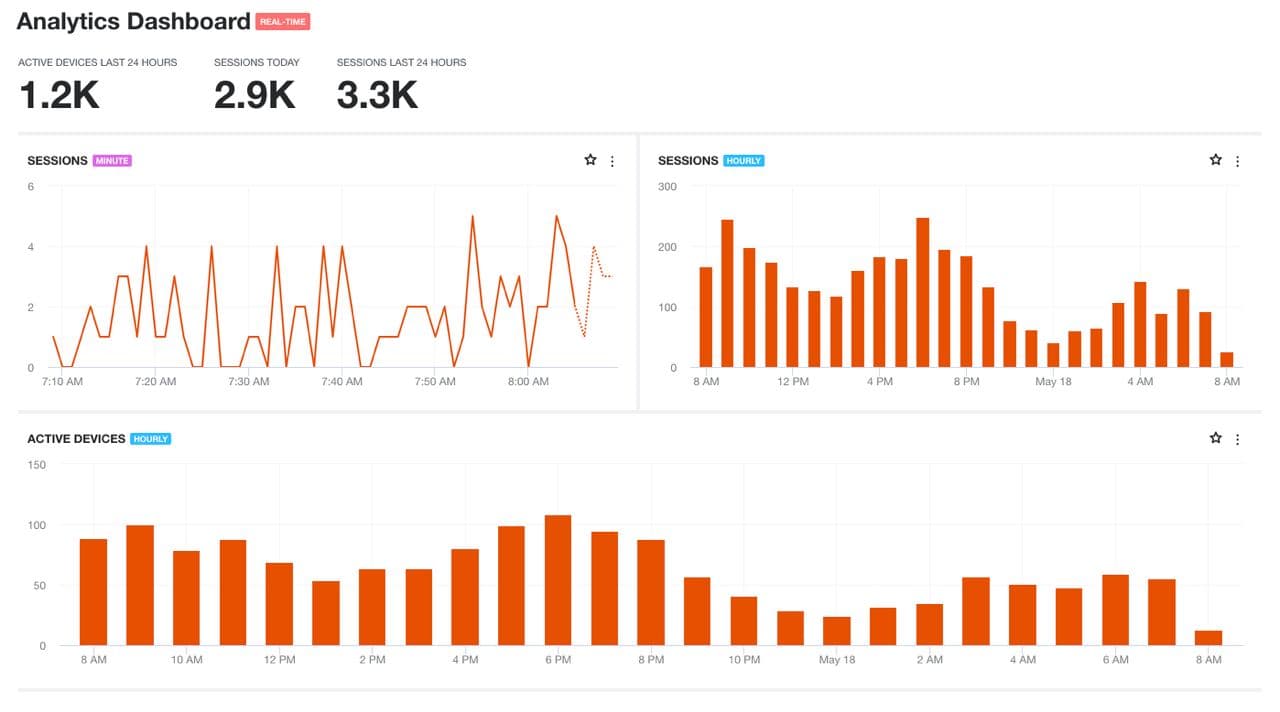
Technical features of the project:
- API level 21+
- Platform: Android
- Devices types: Phones
Programming languages:
- Java
- Kotlin
Libraries:
- Flurry (Analytic)
- AndroidX
- Dagger
- ExoPlayer

